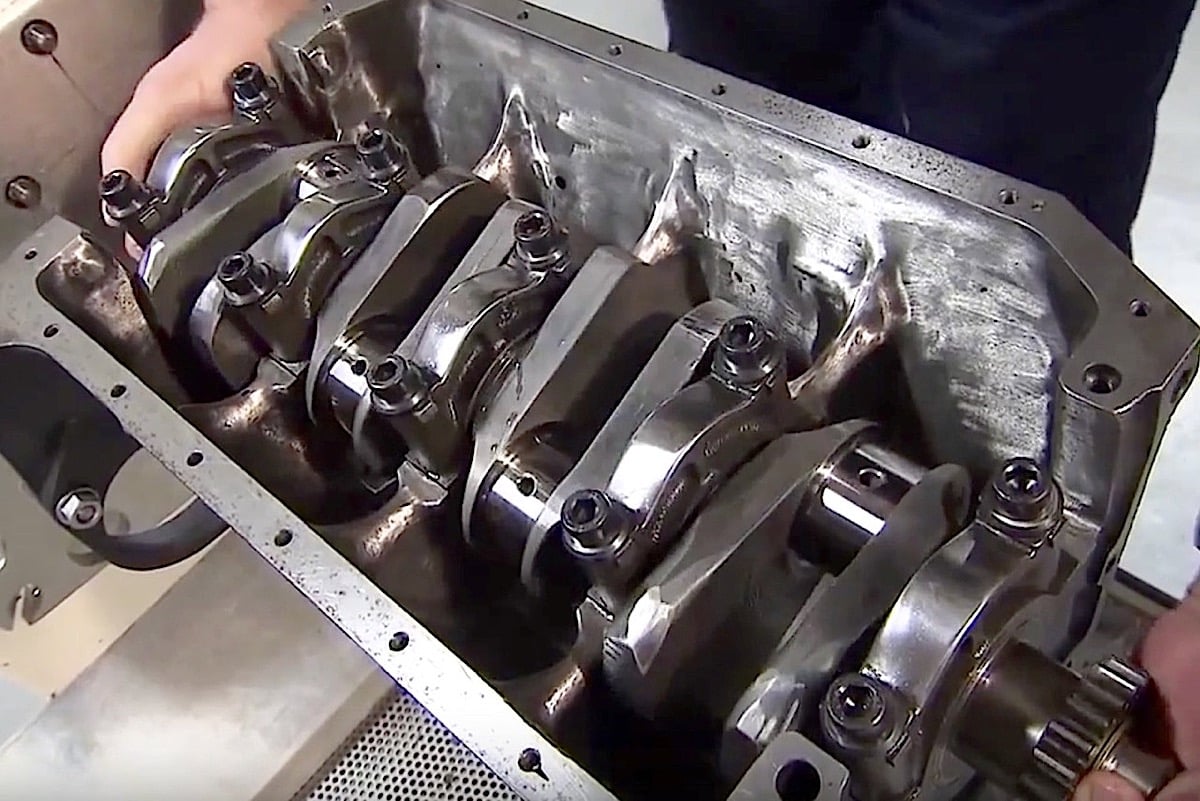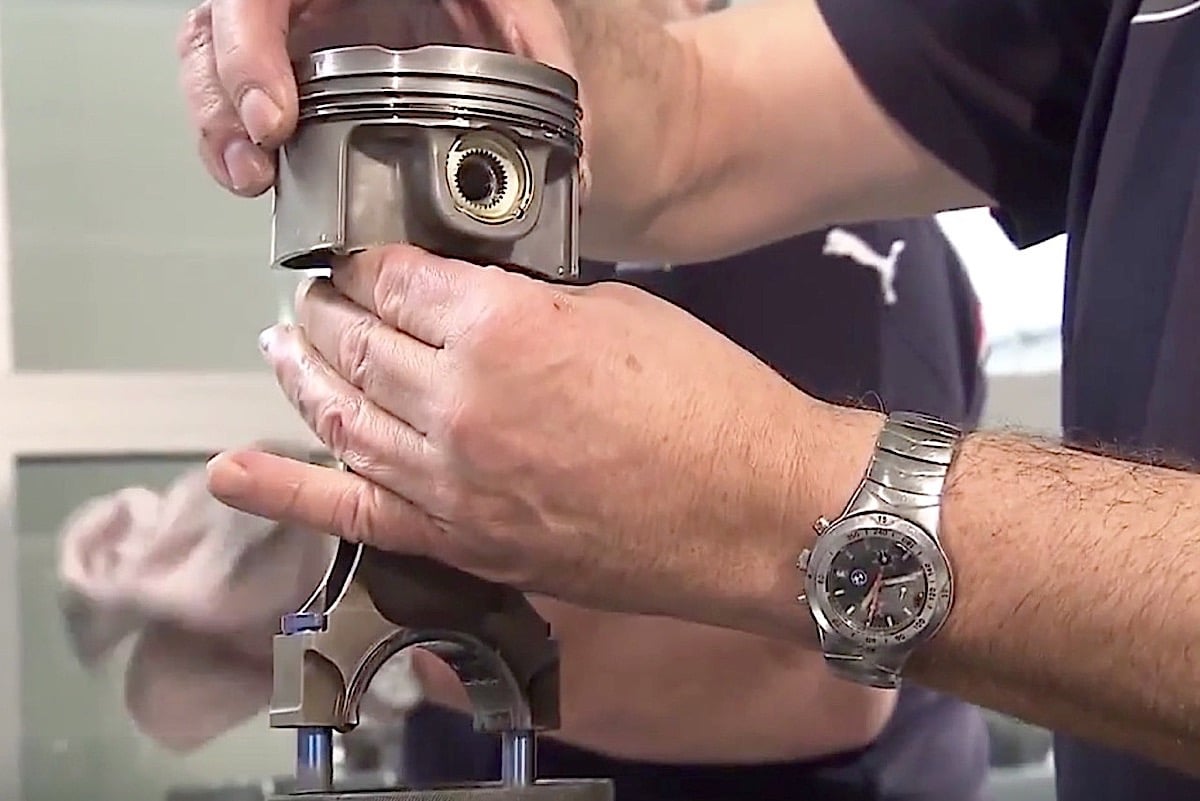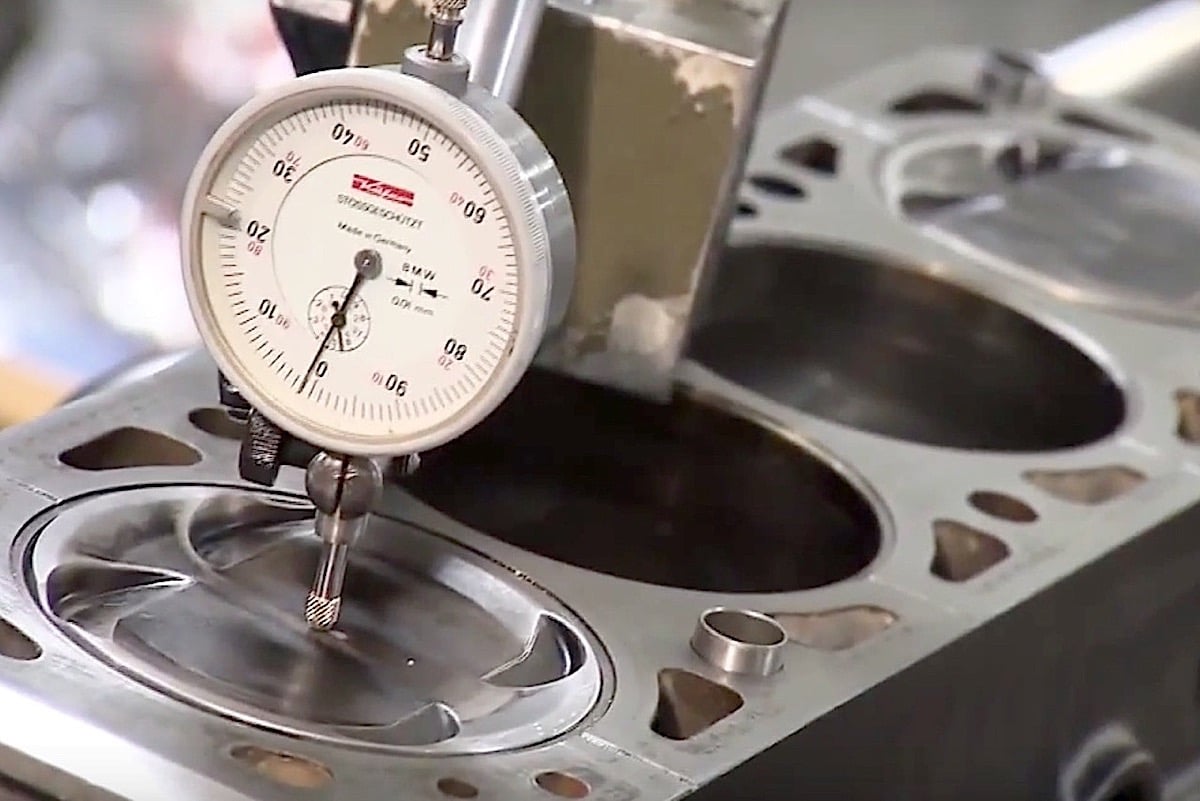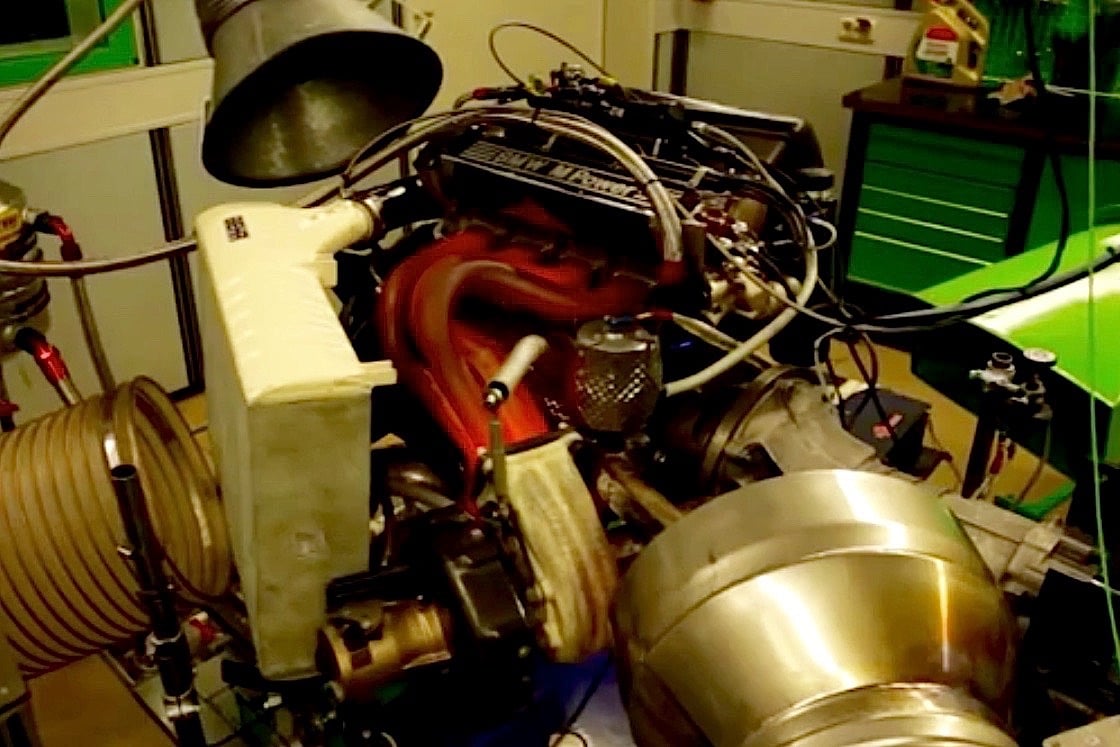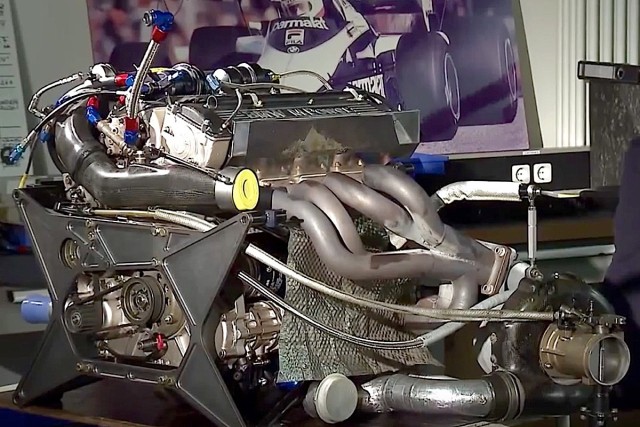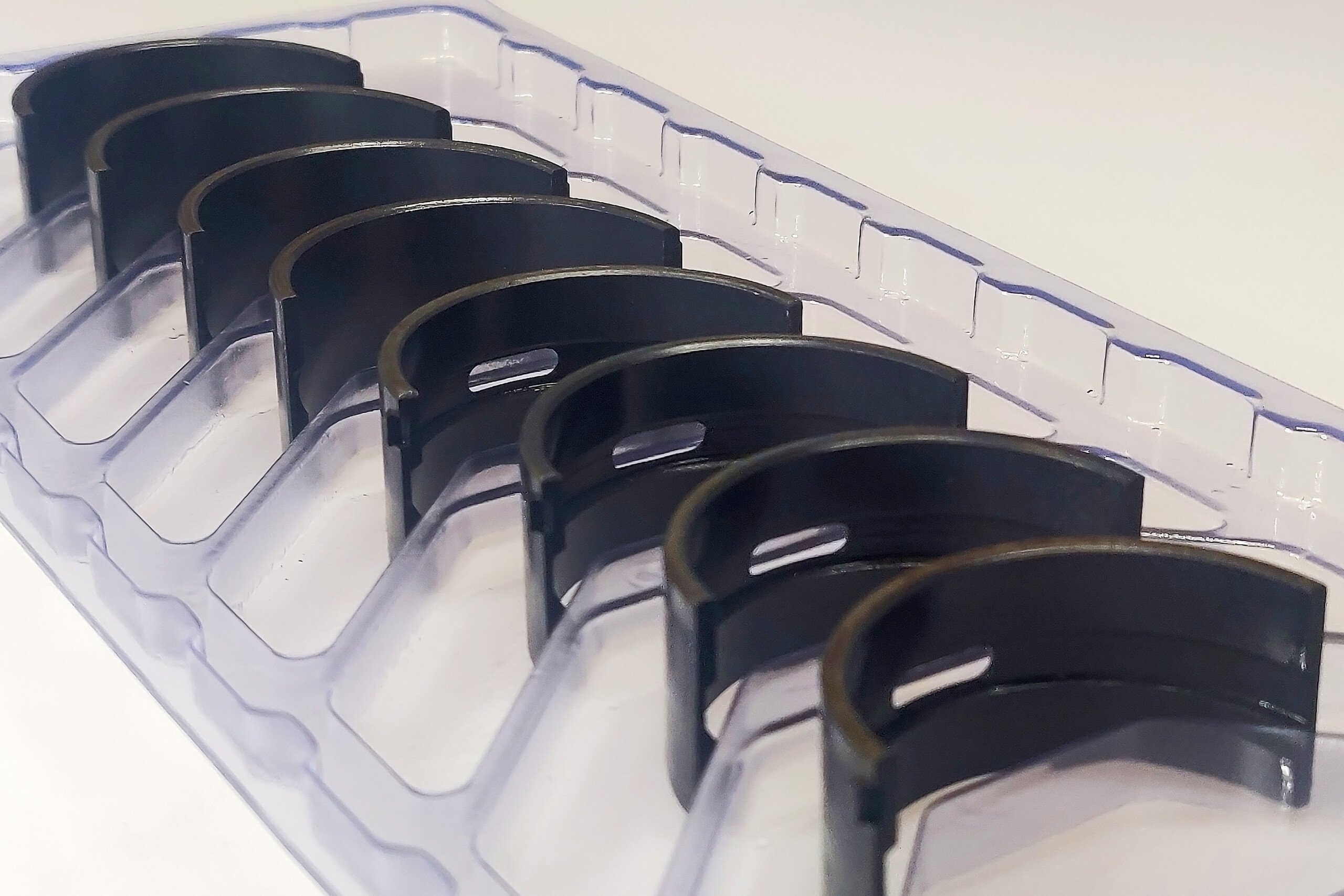Remember the story EngineLabs ran a couple years ago on the myth of urinating on a cylinder block to improve durability? That legend came out of the BMW Formula 1 shop where engineers built 1.5-liter 4-cylinder single-turbo engines reportedly capable of more than 1,400 to 1,500 horsepower in qualifying trim. As the fable goes, the regular production iron blocks with some 100,000 miles on them were left outside to “season” even more in the elements. The theory was that if the block survived all that, it was capable of supporting 50 pounds of boost. And while the blocks were nesting in the shop’s backyard, occasionally an engineer would urinate on it, either as a measure of good luck or perhaps there was some scientific principle at work. Either way, it’s a great story.
Fast forward to this video of modern BMW enthusiasts working on a vintage version of that classic F1 bullet that powered so many teams in the mid-’80s, including the 4-time winner, Brabham BT52. It’s astonishing to think a linerless production block was used in those days with such a massive hair dryer attached to the tubular headers. It’s unlikely, however, that these traditional yet more sophisticated builders felt a need to relieve themselves on the block. Although a skeptic might assume that if this is a vintage F1 block, it might tell a different story.
Here are a few facts about that BMW M12/13 engine: 89.2 x 60.0mm bore and stroke (3.512 x 2.362 inches), titanium connecting rods, gear-driven overhead camshafts, aluminum 4-valve cylinder heads with 35.5mm intake valves (1.398 inch) and 30.2mm exhaust valves (1.189 inch), Bosch ignition, Kugefischer injection and 7.5:1 compression ratio. Max engine speed was 11,500 rpm.
This particular version of the BMW M12/13 probably never turned over 1,000 horsepower. That was a later variant with a different turbo setup than the one shown in the video. Experts place this engine at around 800 horsepower in qualifying trim. Either way, watch the precision and attention to detail devoted to these classic 4-bangers that were part of F1’s greatest era. Unfortunately, there’s an all-too-short clip of the engine on the dyno but viewers will be treated to a time-lapse review of the build at the end of the video.



